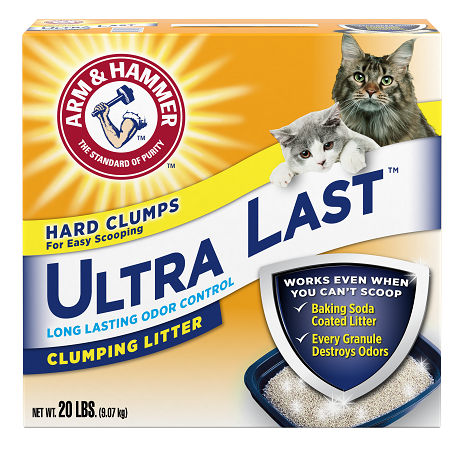Litter Box Training: Learning or Re-Learning
Bringing home a new kitten changes things and can stress your kitten at first. Any change of environment or routine can shake up the training your kitten already has, and he will need to acclimate to your home, which is likely a much bigger space than the shelter. Your kitten might be thinking, “So much more to explore! Also, where is my litter box?” If your kitten has never used a litter box, they may need a little bit of help figuring it out.
Regardless of the situation, it’s exciting adopting a kitten and having a new furry friend join your family. Selecting a great cat litter and litter box and training your kitten to use it is a first step to making sure your “purrfect” pal has everything they need for a lifetime of love and happiness.
How to Train a Kitten to Use the Litter Box
If you’ve ever potty-trained a toddler, you know that the first step is getting them interested in the toilet. You set them on the training toilet at regular intervals, sometimes encouraging them to stay by talking, singing, or reading a book with them. When something happens and they go pee or poo, you celebrate and give praise. Litter training your kitten isn’t actually that much different.
Encourage your kitten to use the litterbox by picking them up gently and placing them in the litter box every so often. The best time to put them in the litter box is after they have eaten, or if they just woke up from one of their many kitten-naps. Eating stimulates kittens to poop, so it’s a good bet that you’ll have success.
If you notice your kitten crouching, sniffing around, or behaving like she needs to use the litter box, that’s a good time to pick her up and place her in it. Doing so reinforces that this is the proper place for her to go.
After you put your kitten in the litter box, wait quietly and see what happens. Most kittens will start to dig with their front paws by instinct. If they start doing this – great! Don’t interfere! If your kitten doesn’t do anything, you can try taking their front paw gently and scratching the litter with it. Often that helps them get the idea. Some kittens will lie down – or even sleep – in a clean litter box while they’re getting the hang of things. Don’t worry, they won’t generally do this once they figure out what the box is for!
Just like most humans, kittens generally prefer privacy when eliminating. Resist the urge to hover and stare at them, and by all means, don’t try to “help” or touch them while they use the litter box. Doing so is more likely to convince them to go elsewhere, where prying eyes and prodding hands won’t bother them.
Feel free to wait nearby, and when your cat finishes his/her business, provide some praise, pets, and even a kitty treat. Associate the box with privacy and positive reinforcement.
One more thing: make sure your kitten can easily climb in and out of the litter box without help. If the sides of the box are too high, your little feline may not physically be able to climb them, will be frightened to jump up there, or be oblivious that anything above their fluffy heads exists.
You can switch to a bigger, or higher-sided box later as your kitten grows, but make sure the new box will fit in the same location. Moving the litter box can cause a regression in litter box training.
Choosing the Best Litter for Kittens
There are many types of cat litter available, so deciding on the best litter for your kitten can be difficult. Staring at the wall of cat litter available in the grocery or pet store aisle can be overwhelming.
Do you want clumping or non-clumping? Scented or unscented? Clay or crystals? Pine, wheat, or grass? Recycled paper or walnut shells? Pellets or granules? Who knew cat litter could be so complicated?
Don’t worry. The best litter for kittens is one that they will use regularly and without complaint.
Types of Litter
There is no such thing as the perfect cat litter for all cats. Taking a one-size-fits-all approach can lead to your kitten turning up her nose at the litterbox, or giving you that judgey look that clearly indicates that this litter is not up to her standards. It might take a few tries before both you and your kitten are happy about the cat litter and its performance. But the training process goes quickly and soon your kitten will have you trained to purchase the right litter for them.
- Clumping clay. Made from bentonite, a highly absorbent clay, this litter forms solid clumps when your cat urinates. Do not flush this cat litter as it will interfere with plumbing and septic systems. The clumping action makes litterbox scooping and cleaning easier, but bentonite litter is heavy. Try Arm & Hammer Clump & Seal, Arm & Hammer Slide, and Arm & Hammer Microguard for this style of litter.
- Non-clumping clay. Typically composed of non-bentonite clay or wood fibers, this litter doesn’t clump when it absorbs urine. Non-clumping clay litter tends to be cheaper and many cats will use it, especially if they got accustomed to it at the shelter.
- Natural Litters. These litters are made from wood fibers, wheat, corn, grass, recycled paper, walnut shells, or a combination of elements to provide clumping, odor control, and biodegradability. Try Arm & Hammer Naturals, which is made with natural wood fibers, plant-based clumping agents, minerals, baking soda, and fragrance to test this type of litter with your kitten.
- Pine. Made from lumber scraps, pine litter can be purchased in multiple forms. The pine scent controls odor, and this litter is made from already occurring waste from lumber production so there are no new trees cut down. Arm & Hammer Feline Pine contains no harsh chemicals and the soft shavings are gentle for kitten toe beans.
- Lightweight Litter. These litters are engineered to be 50% lighter than typical litters, which makes carrying the containers into your house and changing the box easier on your back. If your kitten is very, very young when you get him, like less than 3 months old, you might want to wait before trying lightweight litter. Tiny kittens can be sensitive to dust and the smaller granules of lightweight litter may bother their more delicate systems. Once they are more than 3 months old, however, there should not be an issue. Arm & Hammer Clump & Seal Lightweight is an option.
If you aren’t sure which litter your kitten will prefer, the best solution is to buy several types of litter and provide your kitten with options. A low-sided cardboard box can work for this purpose since you are just testing different litters. Your kitty will make their preference known by which litter box they use and which they refuse.
Yes, you will spend a bit of extra money on the litters that your cat ultimately decides they don’t like, but it’s worth it to prevent future litter box problems or messes in your house. Donate the extra litter to your local animal shelter. There’s likely a cat there who will be happy to use it.
What to Do If Your Kitten Won’t Use the Litter Box
It can be frustrating if your kitten has an accident. If you’re wondering “why my kitten won't use the litter box?” take heart. Even the smartest kitten can have the occasional accident, so don’t expect absolute perfection from the very start.
Should you come across your kitten going outside the litter box, pick her up quickly and deposit her in the box, reinforcing that “this is where you are supposed to go.” Do this calmly and quietly. Refrain from yelling or being rough, using a spray bottle, or punishing them in any way. Doing so may cause your kitten to associate the litter box with punishment, which is the opposite of what you want!
Return to the soiled area and use an enzyme-based cleaner such as OxiClean Carpet & Area Rug Pet Stain and Odor Remover to clean up the urine or feces. Use a black-light flashlight to detect the spot, if needed.
If you were too late, and the kitten already deposited their poo outside the litter box, pick it up in a paper towel and put it in the box. This will help reinforce where the poo belongs and provide a scent trail for the kitten to find the litter box the next time. Soon, your kitten will be fully litter trained, and these accidents will be a thing of the past – just like their kitten baby teeth.
The good news is that once a kitten is litter trained, they will use their box regularly unless there is a medical problem or something that stresses them out. After the initial training is done, not using the litter box is typically a sign of trouble. Take your cat to the vet if they continue to refuse to use their box.



